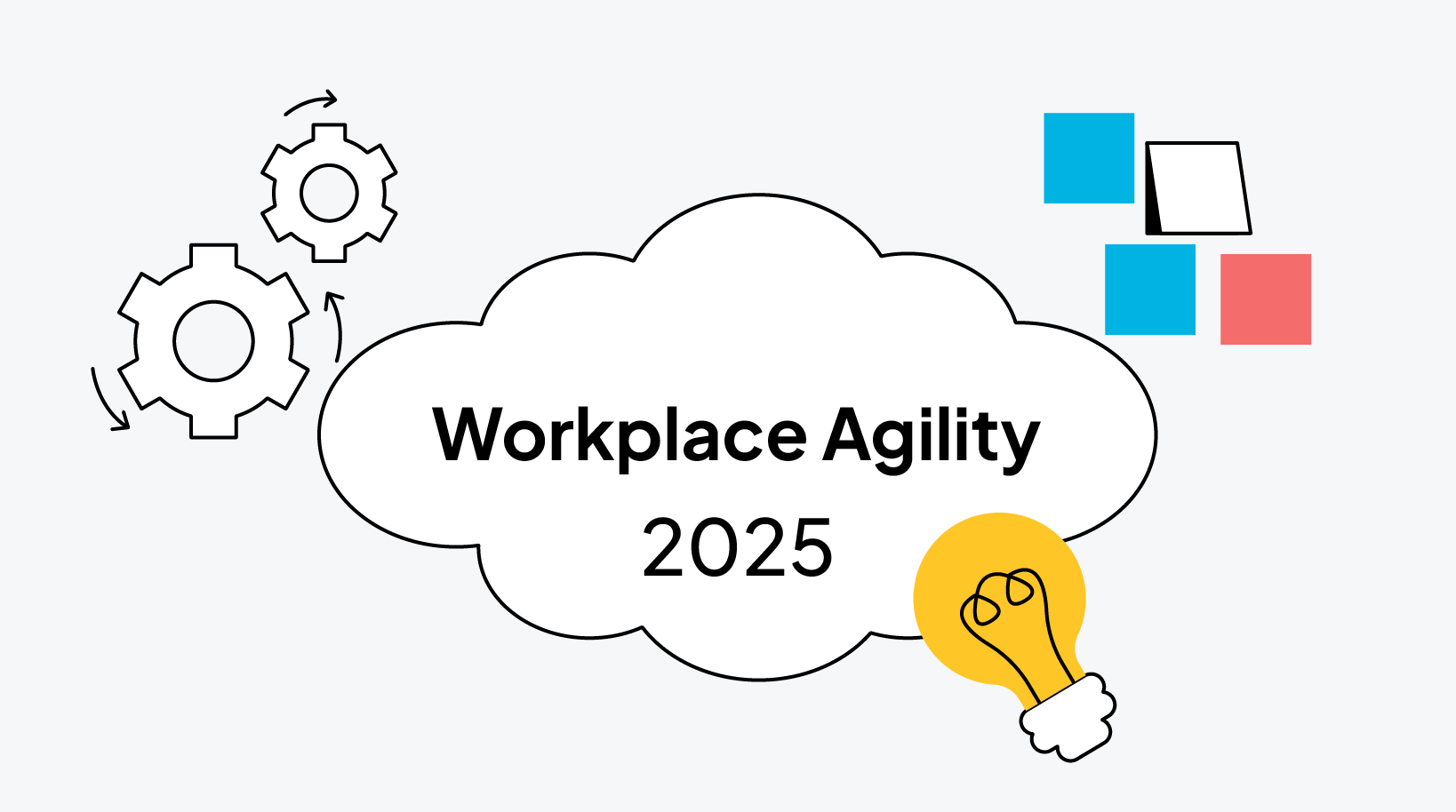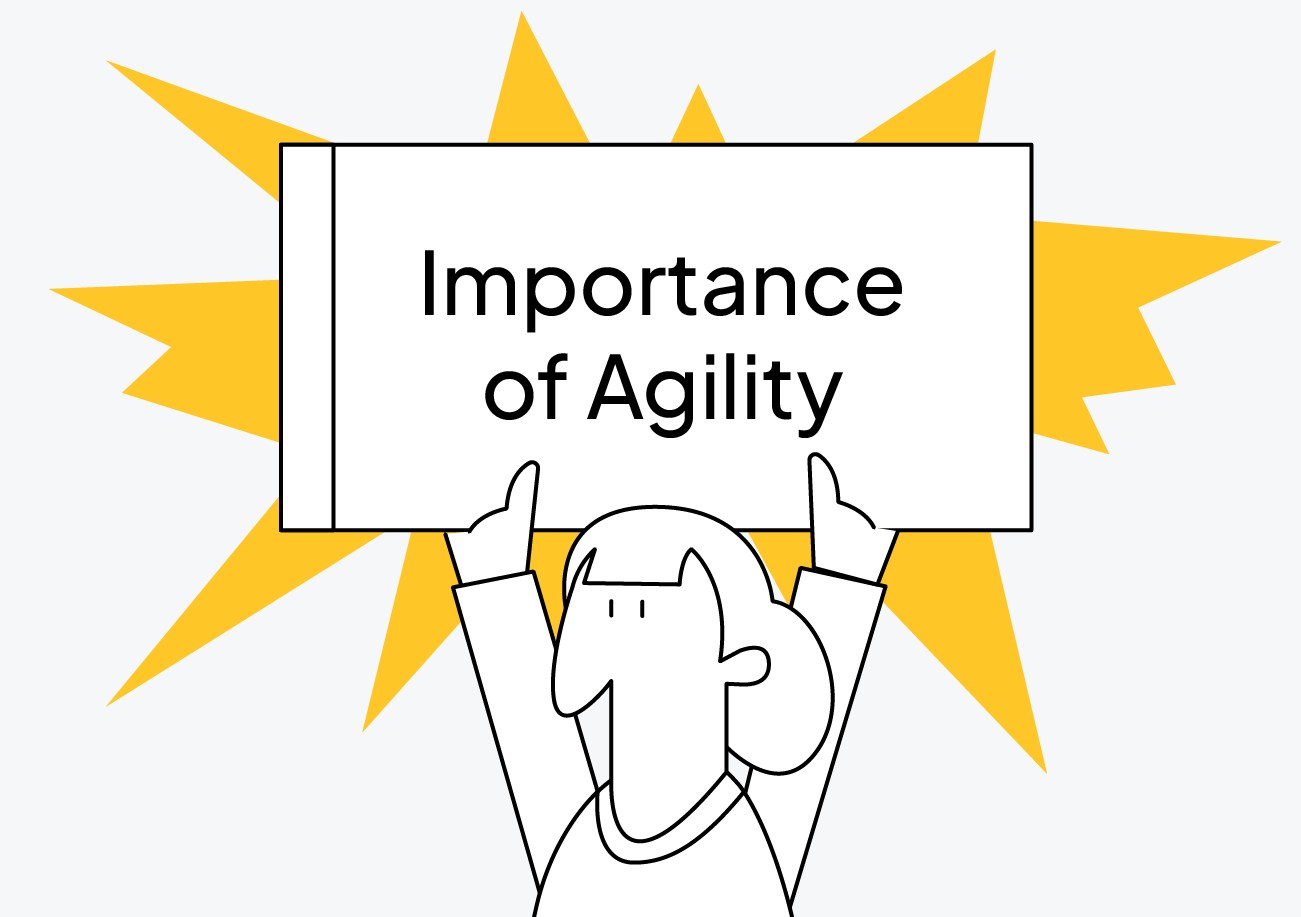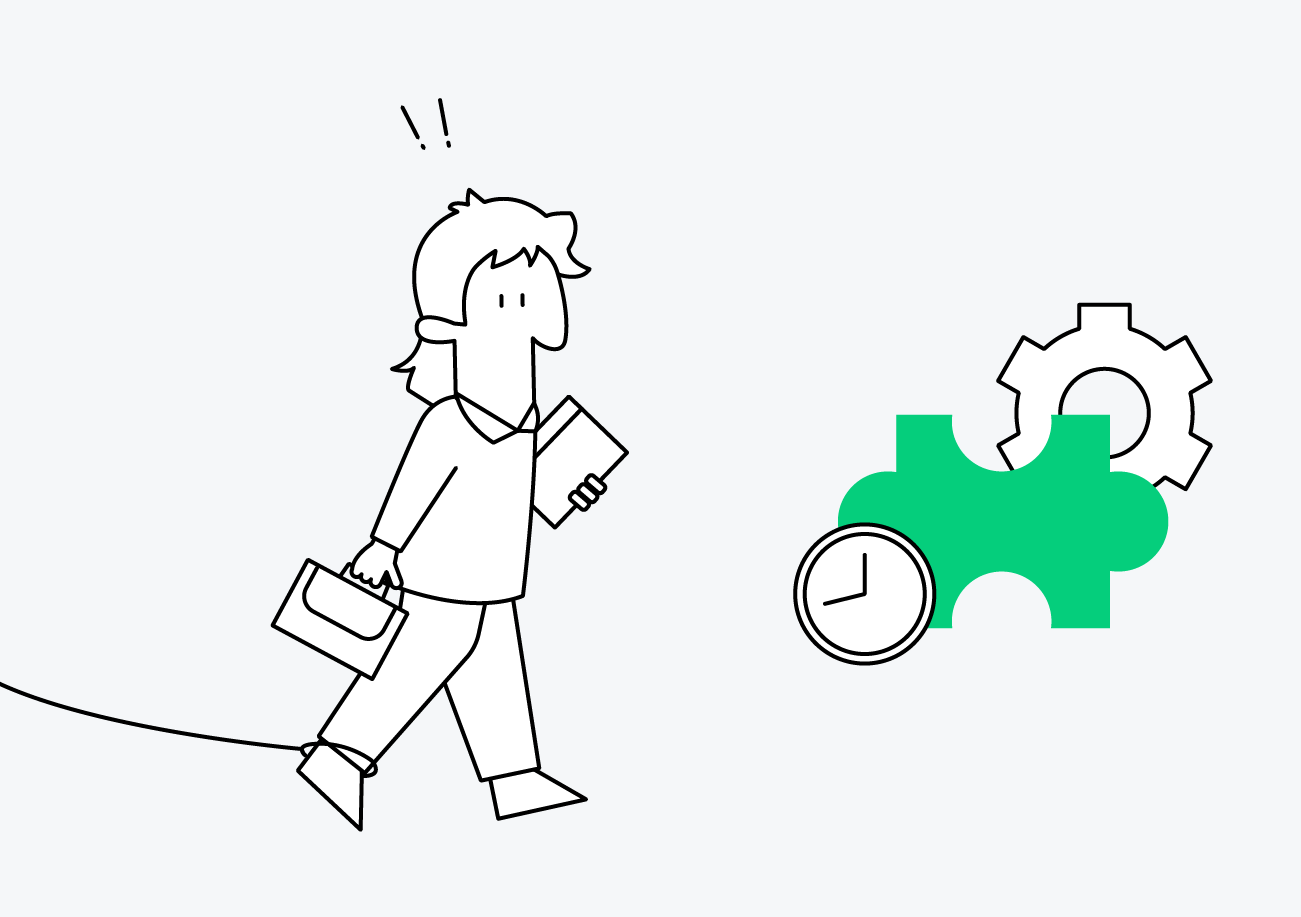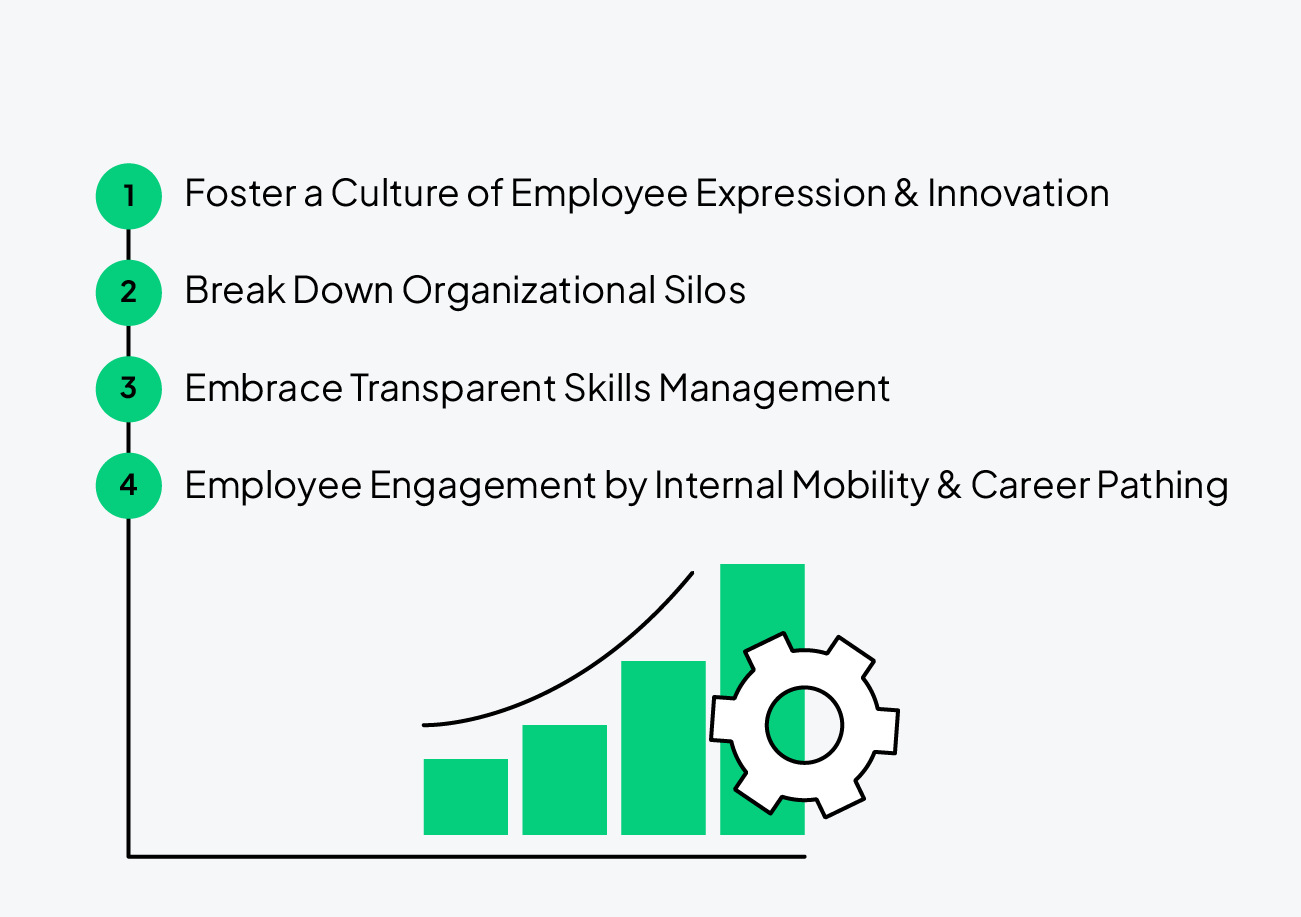
Workplace Agility in 2025: How Skills Visibility Powers Agile Teams


- What Does Agility in the Workplace Really Mean?
- Why Workplace Agility Matters More Than Ever?
- What’s Holding Your Team Back From True Workplace Agility?
- How to Improve Agility in the Workplace?
- Final Words: Making Agility Work in the Real World
It’s Monday—you walk into your office, energized and ready to tackle another week.
But there is tension in the air, and everybody looks stressed.
The rumors are true; a major competitor has launched a product your team only began planning last week.
You had the vision, the right team, and a clear goal, but what went wrong?
This recurring issue often stems from a lack of workplace agility.
In modern agile organizations, leaders harness team potential, uncover talents, and support career growth, contributing to company success.
🎥 Curious how this works in action?
Watch our short video on agyleOS’s Skills Management Software to see how it helps leaders gather real-time insight into their employees’ set of skills, form agile teams at speed to tackle different projects, and retain top talent.
With that clarity, you can rapidly assemble cross-functional teams that adapt to shifting market demands.
Get full visibility into your people’s current and evolving capabilities to build agile, cross-functional teams at speed.
What Does Agility in the Workplace Really Mean?
From a strategic standpoint, agility’s meaning in the workplace is not just moving fast! It’s knowing your next move when priorities shift.
True agility is rooted in data-driven decisions, not just speed for speed’s sake.
Workplace agility fuels employee engagement and fosters a culture where people can respond to sudden market changes, adapt quickly, and remain flexible in the face of uncertainty.
Most modern agile organizations tend to form teams based on their set of skills and compatibility, not just job titles.
That’s how employees are encouraged to step out of their comfort zones, take on smart risks, and work cross-functionally to drive the best results.
That’s why employees pivot from one project to another—not because it’s in their job description, but because they have the right skills to be part of the solution.
But that level of agility requires a culture rooted in transparency and trust. Skill-based tools like agyleOS empower companies to intentionally build that agility culture, functioning exactly as an organizational culture platform should.
When agility is lacking or misunderstood, companies are more vulnerable to losing their edge and falling behind.
Why Workplace Agility Matters More Than Ever?

Now that we’ve explored workplace agility from a strategic lens, let’s shift focus to AI—and how it accelerates projects in today’s fast-paced digital world.
In an AI-driven, fast-moving market, companies that fail to navigate market fluctuations with a clear strategy and focus risk falling behind or going out of business altogether.
When COVID-19 disrupted global business operations, organizations that practiced workplace agility adapted more swiftly to remote work and shifting priorities.
According to McKinsey, these agile companies outperformed others by using practices like OKRs (Objectives and Key Results) and maintaining strong operational rhythms even in remote settings.
This experience proved that agility is not merely a competitive advantage—it’s a critical survival mechanism.
When companies lack agility, you can see the signs everywhere: stalled projects, slow responses to change, and confusion around who is capable of what.
But the biggest cost? Missed opportunities!
The ones we didn’t spot or couldn’t position ourselves to act on, because our workplace wasn’t agile enough to begin with.
AI has had quite an impact on the rapid technological growth and global competition, turning agility into an operational necessity, rather than a choice.
According to Gallup, only 36% of European employees feel connected to coworkers through shared knowledge!
When communication breaks down and teams can’t work cross-functionally, they lose sight of customer needs—and, ultimately, their performance suffers.
Managers have a responsibility to thoroughly explain how workplace agility impacts performance, work quality, and career growth.
That transparency is key to earning employees’ trust and building a culture that is not rooted in fake slogans.
A truly agile organization fosters a fair, healthy environment—one where people are valued for both their current skills and their potential to grow.
What’s Holding Your Team Back From True Workplace Agility?

By now, you probably know why agility is a necessity for progression. However, you may still struggle to acknowledge what’s holding your teams back from eliminating bottlenecks.
Static organizational charts, inflexible job roles, and insufficient visibility of employees’ skills impede the cultivation of workplace agility.
Unaware of real-time capabilities within the company, HR leaders are only guessing their way through workforce planning.
The problem is not just your people's unwillingness to be agile—it’s your system's refusal to let them be.
To pivot toward a new priority, you must know what talent is available within your company and stop building the future workforce based on old job titles and guesswork.
Agility isn’t just a mindset, it’s a capability!
And what enhances this capability and makes it useful is a skills management platform, like agyleOS, which helps organizations create interactive org charts to strengthen team structures and boost collaboration among different departments.
🎥 If you want to see how you can base your teams on their skills and not just job titles, watch agyleOS’s video on how Interactive Org Charts can help you instantly visualize skills across the organization, beyond the traditional job descriptions.
Now that we know what’s holding teams back from improvement and how we can prevent it from happening, we can learn to improve agility in our workplace.
How to Improve Agility in the Workplace?

The truth is, there is no secret ingredient or shortcut to improve agility in the workplace!
To create an agile business, you need an agile, flexible workforce where adaptability and collaboration are present in everyday operations.
However, four practices support and teach organizations how to improve agility in the workplace:
1- Foster a Culture of Employee Expression & Innovation
Agile organizations are more willing to tap into their employees’ visions and fresh ideas to deal with different challenges.
Most successful organizations empower their employees to act faster and make informed decisions on the spot, without waiting for top-down approvals.
When employees are trusted to make informed decisions in the moment, it promotes accountability, quick action, and agility.
2- Break Down Organizational Silos
In agile organizations, cross-functional collaboration is always encouraged and considered a norm, rather than an exception!
Different teams work with each other, share their knowledge, and celebrate outcomes collectively.
Skill-based team building takes this even further. By assessing individual skills, areas of expertise, and overall competency, organizations can form cross-functional teams that cooperate perfectly to deliver results.
3- Embrace Transparent Skills Management
Some managers struggle with the hiring process because first, they don’t know what skills they need in their organization, and second, too often, they rely on job titles rather than assessing candidates based on actual capabilities.
That’s how they end up searching for “all-rounders” instead of building agile teams.
But agility is not about overloading employees with work. It’s about understanding the specific skills your company has—and what it lacks.
Implementing proper systems in organizations, like employee skills inventory software, gives the leadership and employees a real view of existing or missing skills within a company.
4- Employee Engagement by Internal Mobility & Career Pathing
Smart, successful leaders can increase employee engagement, pave the way for employees’ career growth, while staying on budget.
A skills management platform allows companies to map employees' existing skills and build well-balanced project teams that cooperate to seize new opportunities, without the need for constant hiring.
So when new challenges or initiatives arise, you're ready. No scrambling. No skill gaps.
Aside from wasting budget, hiring someone new takes time, from the onboarding process to getting familiar with the work and team dynamics.
This delay may affect the agility in your company and pull you further away.
Not only can you stay on budget and prevent excess expenses, but you can also boost employee growth by matching your people to new roles or projects based on their current skills and career aspirations.
Don’t just fill roles. Build loyalty within your company with our internal talent marketplace platform. Retain your best people—without inflating your budget.
Final Words: Making Agility Work in the Real World

It’s easy to discuss the importance of agility in the workplace, but in practice, there is always a question of how to implement it effectively in the real world.
Creating an agile workplace is not an easy task. If you have the right mindset, all you need is the right system.
As Daniel Newman tels Forbes,
“Agility is about empowering individuals to make swift, informed decisions amid change, thereby unlocking higher productivity and efficiency.”
Without infrastructure, agility is nothing but another buzzword!
So, when you implement a proper system that acts as an operational imperative, coupled with efficient skills management, agility becomes your strategic advantage.
Tools and systems in the technological era have made it much easier for companies to build this foundation and streamline activities.
A platform like agyleOS equips HR leaders to form teams based on real-time skills data, not assumptions. This is how you make agility real.
When new project opportunities arise or when a crisis occurs, organizations that rely only on rigid job titles and outdated org charts are left scrambling.
But with skill-based visibility into employees’ skills and capabilities, companies can quickly mobilize the right people to collaborate effectively, respond to change smarter, and grow from within, without losing momentum.
Remember, agility isn’t just a future ideal; it’s a present-day imperative. It starts with knowing your people and recognizing the talent within them, even if it's hidden.
By submitting this form, I confirm that I have read the privacy policy and that I consent to the processing of my personal data by agyleOS for the purposes stated. In the event of consent, I can revoke my consent at any time. Furthermore, by submitting the form, I agree to the general terms and conditions.


- Product
- Resources
- Compare
- Company
